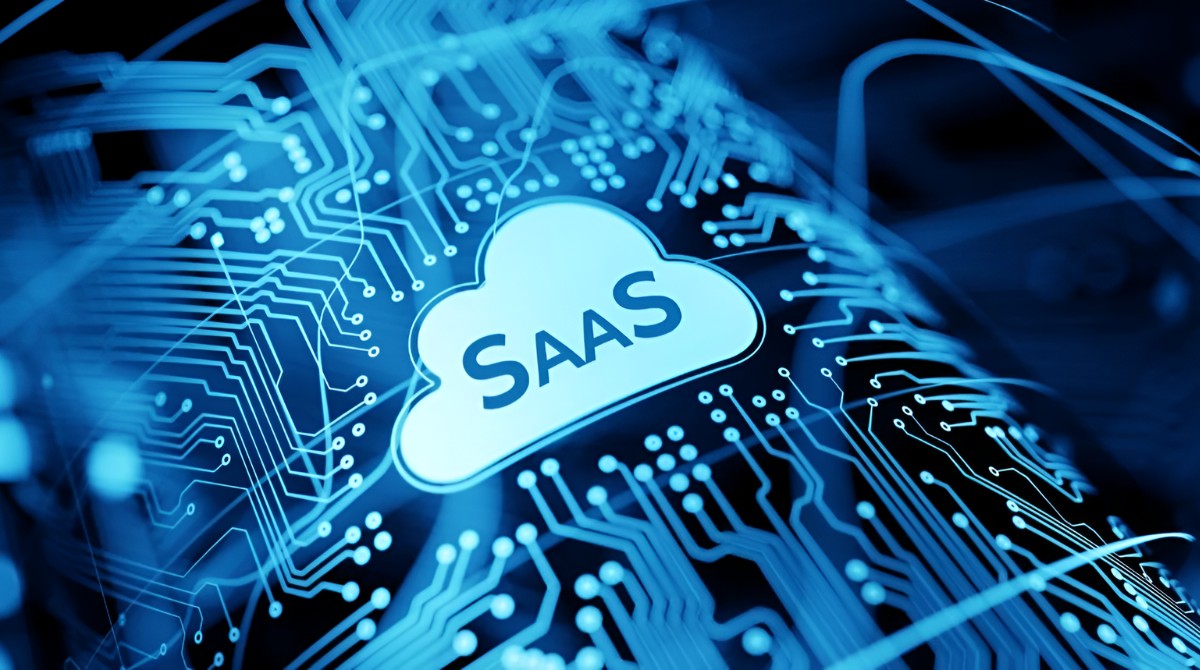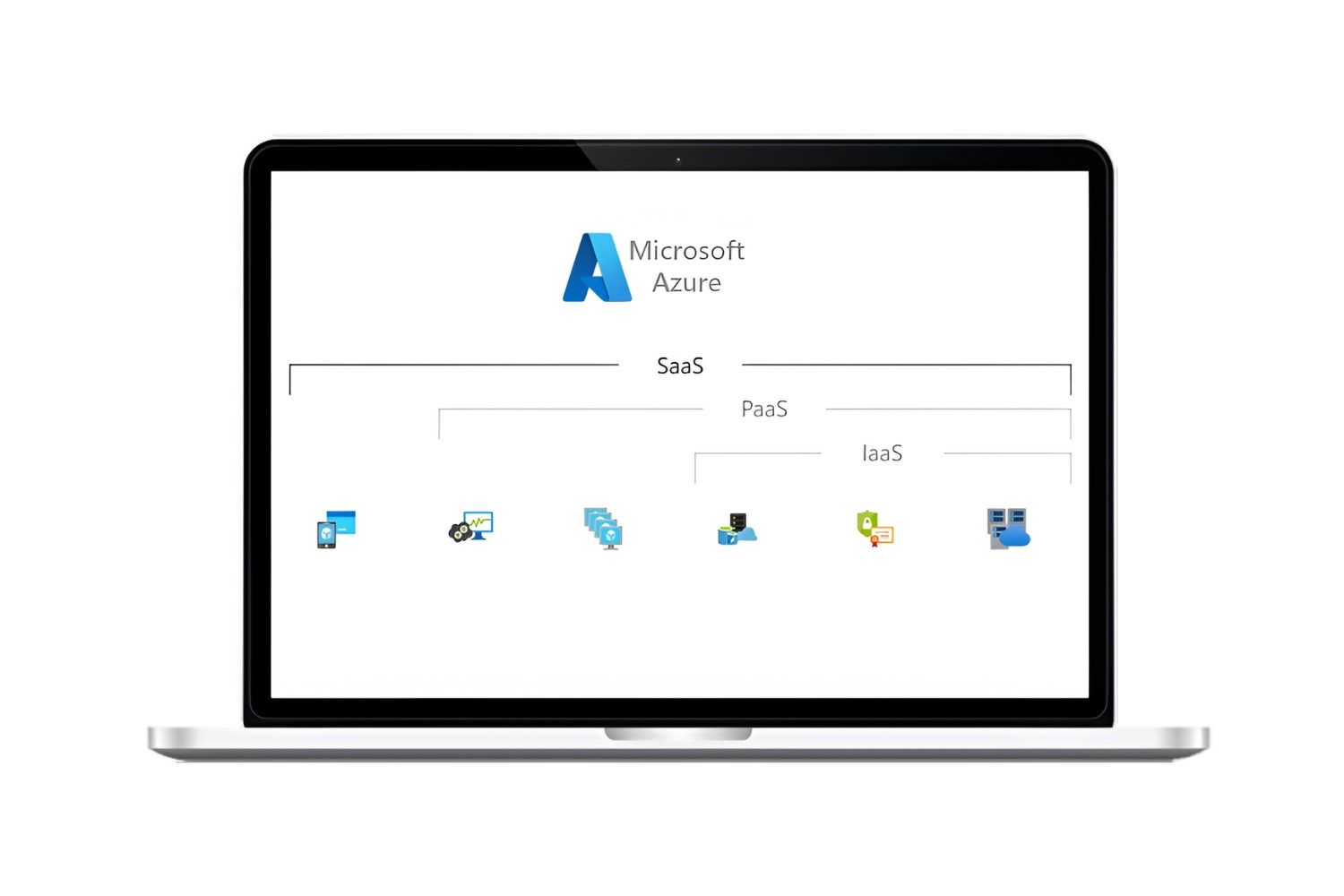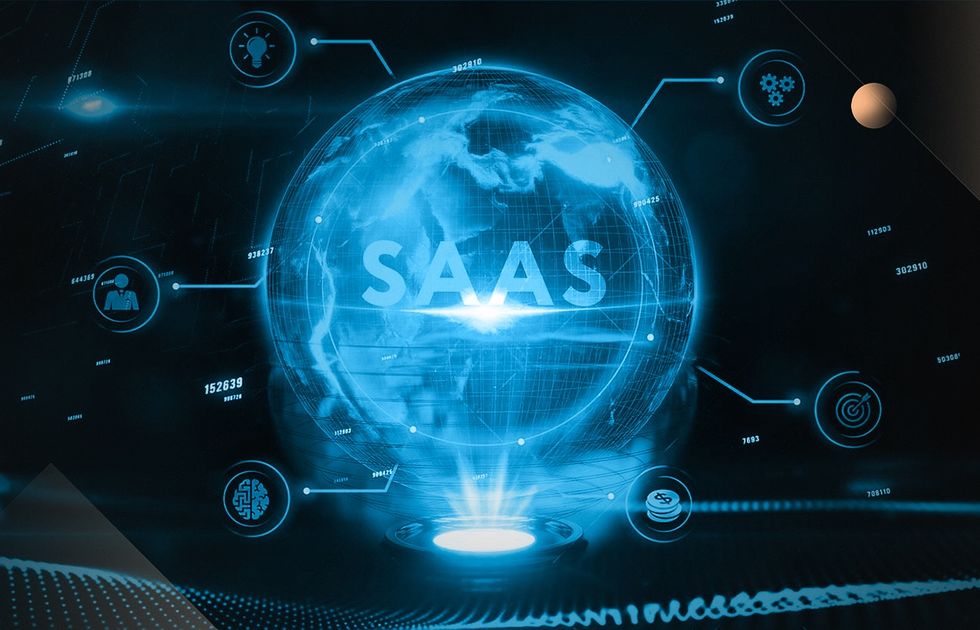Introduction
Welcome to the world of SaaS applications, where software meets convenience. In today’s digital landscape, businesses and individuals are increasingly relying on cloud-based software solutions to streamline their processes, enhance productivity, and achieve their goals more efficiently. But what exactly is a SaaS application?
SaaS stands for Software as a Service. It refers to a software delivery model where applications are hosted and maintained by a service provider in the cloud. Instead of purchasing software licenses and installing the applications locally on computers or servers, users can access and use the software over the internet.
This software delivery model has revolutionized the way we use and interact with software solutions. It has eliminated the need for complex installations, constant updates, and expensive hardware requirements. With SaaS applications, users can simply log in through a web browser or a dedicated app and start using the software instantly, from anywhere and on any device.
SaaS applications offer an extensive range of functionalities and cater to various industries and business needs. From project management and customer relationship management to accounting and human resources, there’s a SaaS application for almost every aspect of business operations.
The rise of SaaS applications has been driven by the numerous benefits they provide to businesses and individuals. In the following sections, we will explore how these applications work, their key features, and the advantages and disadvantages associated with using them.
Definition of SaaS
Software as a Service (SaaS) is a software delivery model that allows users to access and use applications over the internet, without the need for local installation or hardware maintenance. In a traditional software model, users would purchase a software license and install the application on their computers or servers. However, with SaaS, the software is hosted and managed by a third-party provider, who delivers it to users via the internet.
One of the key features of SaaS is its subscription-based pricing model. Instead of paying a large upfront cost for software licenses, users pay a regular subscription fee to access and use the SaaS application. This pay-as-you-go approach offers businesses more flexibility and scalability, as they can adjust their software usage based on their needs and budget.
SaaS applications are typically accessed through a web browser or a dedicated app, making them easily accessible from any device with an internet connection. Users can log in to their accounts and immediately start using the software, without the need for complex installations or updates. This cloud-based approach allows for seamless collaboration and real-time data synchronization, as multiple users can work on the same application simultaneously and access the latest version of the data.
Another distinguishing characteristic of SaaS is that the service provider is responsible for the maintenance, security, and updates of the application. This relieves users from the burden of managing software infrastructure, enabling them to focus on their core business activities. The service provider ensures that the application is always up-to-date, secure, and available, providing a hassle-free software experience for users.
Overall, the SaaS model offers businesses and individuals numerous advantages, including cost savings, scalability, accessibility, and reduced IT overhead. It has revolutionized the software industry and continues to shape the way we use and interact with applications. In the following sections, we will delve deeper into how SaaS applications work, their benefits, and some common examples in various industries.
How SaaS Applications Work
SaaS applications operate on a centralized system, where the software and data are hosted and managed by the service provider. Users access the application via the internet, using a web browser or a dedicated app. Let’s explore the inner workings of SaaS applications:
1. Infrastructure: The service provider builds and maintains the necessary infrastructure to host the SaaS application. This includes servers, databases, network resources, and security measures. The provider ensures that the infrastructure is reliable, scalable, and secure to accommodate user demands.
2. Multi-tenancy: SaaS applications are designed to be multi-tenant, which means that multiple users and organizations can share the same application instance. Each user’s data is stored separately, ensuring privacy and security. This multi-tenant architecture allows for cost efficiencies, as resources are shared among users, reducing the overall infrastructure costs.
3. Access and Authentication: Users gain access to the SaaS application through a secure login process. The service provider manages the authentication and ensures that only authorized users can access the application. This helps protect sensitive data and prevent unauthorized access.
4. Data Storage and Management: The service provider is responsible for storing and managing user data in a secure manner. Data is typically stored in a centralized database, which allows for seamless collaboration and real-time updates. The provider ensures data integrity, backups, and disaster recovery measures to protect user data.
5. Upgrades and Updates: One of the benefits of SaaS applications is that the service provider takes care of updates and upgrades. They continuously enhance the application, adding new features, fixing bugs, and addressing security vulnerabilities. Users receive these updates automatically, ensuring they have access to the latest version of the application without any extra effort.
6. Support and Maintenance: The service provider offers ongoing support and maintenance for the SaaS application. They handle technical issues, provide user assistance, and address any service-related problems. This allows users to focus on utilizing the software rather than troubleshooting technical issues.
SaaS applications offer a seamless and user-friendly experience, with users being able to access and use the software from anywhere, on any device. The service provider takes care of the underlying infrastructure, data management, security, and updates, allowing users to reap the benefits of the application without the overhead of software management. Next, let’s explore the advantages of using SaaS applications in various business settings.
Benefits of SaaS Applications
SaaS applications offer numerous benefits to businesses and individuals, making them a popular choice in today’s digital landscape. Let’s explore some of the key advantages of using SaaS applications:
1. Cost Savings: One of the primary benefits of SaaS applications is the cost savings they offer. Instead of purchasing expensive software licenses upfront, users pay a regular subscription fee, which is often lower and more manageable. This eliminates the need for significant capital investments and allows businesses to allocate their resources more effectively.
2. Scalability: SaaS applications are highly scalable, meaning that they can easily accommodate the changing needs of businesses. As the user base grows or new features are required, the service provider can quickly scale up the infrastructure and resources to meet the demand. This flexibility enables businesses to scale their operations without worrying about hardware limitations.
3. Accessibility and Mobility: With SaaS applications, users can access their software and data from anywhere with an internet connection. Whether they are in the office, at home, or on the go, SaaS applications can be accessed through a web browser or a dedicated app. This mobility allows for increased productivity, as users can work from any location and collaborate with team members in real-time.
4. Easy Implementation: SaaS applications are known for their ease of implementation. Since the infrastructure and software are managed by the service provider, users can quickly get started without the need for complex installations or technical expertise. This reduces the implementation time and allows businesses to start utilizing the application immediately.
5. Automatic Updates and Maintenance: SaaS applications take the hassle out of software updates and maintenance. The service provider handles all the necessary upgrades, bug fixes, and security patches, ensuring that users always have access to the latest version of the software. This saves businesses time and resources, as they no longer need to worry about manually updating and maintaining their applications.
6. Collaboration and Real-time Syncing: SaaS applications are designed for collaboration, allowing multiple users to work on the same application simultaneously. This promotes real-time syncing of data and enables teams to work together seamlessly, regardless of their physical location. Collaboration features such as document sharing, commenting, and task assignment enhance productivity and streamline workflows.
7. Focus on Core Business Activities: By offloading software management to the service provider, businesses can focus on their core activities. They can allocate their resources and time towards innovation, customer service, and strategic initiatives, instead of investing in IT infrastructure and software maintenance. This allows for improved efficiency, agility, and competitiveness in the market.
The benefits of SaaS applications extend across various industries and business sizes. Whether it’s a startup looking for cost-effective solutions or a large enterprise in need of scalability and mobility, SaaS applications offer a range of advantages. In the following sections, we will explore some common examples of SaaS applications and highlight their key features.
Common Examples of SaaS Applications
The versatility of SaaS applications allows them to cater to a wide range of industries and business needs. Let’s take a look at some common examples of SaaS applications:
1. Customer Relationship Management (CRM): CRM software helps businesses manage their customer relationships and streamline sales processes. Popular CRM SaaS applications, such as Salesforce and HubSpot, offer features like lead management, contact management, email marketing, and analytics. These applications enable businesses to track customer interactions, automate sales activities, and improve customer satisfaction.
2. Project Management: Project management SaaS applications are essential for organizing and overseeing tasks, deadlines, and resources. Applications like Asana and Trello provide project planning, task assignment, collaboration, and progress tracking features. They allow teams to allocate resources effectively, monitor project status, and ensure timely completion of deliverables.
3. Human Resources (HR): HR SaaS applications streamline HR processes, such as employee onboarding, payroll management, performance reviews, and benefits administration. Applications like BambooHR and Workday offer features such as employee self-service portals, time tracking, and compliance management. These applications automate repetitive HR tasks, improve data accuracy, and enhance employee productivity.
4. Accounting and Finance: SaaS applications like QuickBooks and Xero help businesses manage their financial processes, including invoicing, expense tracking, and financial reporting. These applications provide features such as bank reconciliation, automatic expense categorization, and tax management. They enable businesses to maintain accurate financial records, generate real-time reports, and streamline accounting operations.
5. Communication and Collaboration: SaaS applications in this category facilitate communication and collaboration among team members. Examples include tools like Slack and Microsoft Teams, which offer instant messaging, file sharing, video conferencing, and project-specific channels. These applications enhance team collaboration, reduce email clutter, and improve overall communication efficiency.
6. Customer Support: SaaS applications designed for customer support, such as Zendesk and Freshdesk, help businesses provide efficient and timely customer service. These applications offer features like ticket management, knowledge base systems, live chat, and customer feedback tools. They enable businesses to handle customer inquiries effectively, track support tickets, and provide personalized support experiences.
7. E-commerce: SaaS applications in the e-commerce space, such as Shopify and BigCommerce, help businesses create and manage online stores. These applications provide features like inventory management, payment processing, order fulfillment, and website customization. They enable businesses to establish an online presence, sell products or services, and manage the entire e-commerce process efficiently.
These examples represent just a fraction of the wide range of SaaS applications available in today’s market. The flexibility and customization options of SaaS applications make them suitable for businesses of all sizes and industries. In the following sections, we will explore the key features that make SaaS applications so appealing to users.
Key Features of SaaS Applications
SaaS applications offer a wide range of features that make them attractive to businesses and individuals. Let’s explore some of the key features that distinguish SaaS applications:
1. Accessibility: SaaS applications are designed to be accessible from anywhere, allowing users to log in and use the software on any device with an internet connection. This accessibility promotes flexibility and enables users to work remotely, collaborate with team members in real-time, and access their data and applications on the go.
2. Scalability: SaaS applications are highly scalable, allowing businesses to easily adjust their usage based on their needs. As the user base grows or new features are required, the service provider can quickly scale up the infrastructure to accommodate the increased demand. This scalability promotes business growth without the need for significant investments in hardware or software licenses.
3. Multi-tenancy: SaaS applications are built on a multi-tenant architecture, where multiple users or organizations can share the same application instance. Each user’s data is stored separately and securely, ensuring privacy and data integrity. This multi-tenancy feature allows for cost efficiencies and resource sharing among users.
4. Automatic Updates: SaaS applications automatically update and upgrade themselves, ensuring that users always have access to the latest version of the software. The service provider takes care of implementing new features, fixing bugs, and addressing security vulnerabilities. This feature saves businesses time and resources, as they no longer have to worry about manual updates or managing software versions.
5. Data Security and Backup: SaaS applications prioritize robust data security measures. The service providers implement industry-standard security protocols to protect user data from unauthorized access, breaches, and data loss. Additionally, regular data backups and disaster recovery measures are in place to ensure that data is safe and can be restored in case of any unforeseen incidents.
6. Collaboration Tools: SaaS applications often come with built-in collaboration tools that enable teams to work together seamlessly. These tools include features such as document sharing, real-time editing, commenting, and task assignment. They facilitate effective communication, improve collaboration, and enhance productivity by eliminating the need for separate collaboration platforms.
7. Customization and Integration: SaaS applications offer customization options to tailor the software to specific business needs. Users can often customize the user interface, workflows, and settings to align with their requirements. Additionally, SaaS applications can integrate with other software and platforms, allowing for seamless data transfer, synchronization, and automation.
8. Analytics and Reporting: SaaS applications often provide built-in analytics and reporting features that allow users to track key performance metrics, gain insights, and generate customized reports. These features enable businesses to make data-driven decisions, monitor progress, and identify areas for improvement.
SaaS applications combine these key features to deliver a flexible, user-friendly, and powerful software experience. By leveraging these features, businesses can enhance efficiency, productivity, and collaboration within their operations. In the next section, we will explore the advantages and disadvantages of using SaaS applications.
Advantages and Disadvantages of SaaS Applications
SaaS applications offer several advantages that have made them increasingly popular in the business world. However, it is important to consider the potential disadvantages as well. Let’s explore the advantages and disadvantages of using SaaS applications:
Advantages:
- Cost Savings: SaaS applications eliminate the need for upfront investments in software licenses and infrastructure, resulting in significant cost savings for businesses.
- Scalability: SaaS applications can easily scale up or down to meet changing business needs, allowing businesses to pay for what they need at any given time.
- Accessibility and Mobility: SaaS applications can be accessed from any device with an internet connection, providing users with the flexibility to work from anywhere and collaborate in real-time.
- Features and Updates: SaaS applications often offer a wide range of features, and they automatically update and upgrade themselves to provide users with the latest functionalities and security enhancements.
- Collaboration: SaaS applications usually include built-in collaboration tools that facilitate team collaboration through features like document sharing, real-time editing, and task assignment.
- Lower IT Maintenance: With SaaS applications, the responsibility for IT maintenance, updates, and security lies with the service provider, freeing up resources and time for businesses.
Disadvantages:
- Dependency on Internet: SaaS applications rely heavily on internet connectivity, and disruptions in internet service can impact users’ ability to access and use the software.
- Data Security Concerns: Businesses entrust their data to the service provider, raising concerns about data security and privacy. It is crucial to choose reputable providers with robust security measures in place.
- Limited Customization: SaaS applications may offer limited customization options compared to on-premises software, as they are built with a standardized infrastructure to serve multiple users.
- Vendor Dependency: Businesses become reliant on the service provider for software updates, support, and the overall performance of the application. This dependency can present challenges if the vendor experiences service interruptions or goes out of business.
- Data Migration: Transitioning to a different SaaS application or moving data back to on-premises solutions can sometimes be challenging and time-consuming, requiring careful planning and execution.
- Integration Complexity: Integrating SaaS applications with other software or platforms can be complex, depending on the compatibility and available integration options.
Understanding the advantages and disadvantages of SaaS applications is essential for businesses to make informed decisions when choosing software solutions. Each business’s unique needs and priorities should be taken into account to determine if SaaS applications align with their goals. In the following section, we will explore key considerations when selecting a SaaS application.
Considerations when Choosing a SaaS Application
When selecting a SaaS application for your business, it is important to consider several factors to ensure the best fit for your needs. Let’s explore some key considerations to keep in mind:
1. Business Requirements: Evaluate your specific business requirements and goals. Identify the features and functionalities that are crucial for your operations. Consider factors such as scalability, integration capabilities, and customization options to ensure that the SaaS application aligns with your needs.
2. Security and Data Privacy: Ensure that the SaaS application has robust security measures in place to protect your sensitive data. Look for certifications and compliance with industry standards. Review their data backup and disaster recovery processes to ensure the safety and integrity of your information.
3. Reliability and Performance: Consider the reliability and performance track record of the service provider. Look for uptime guarantees and service level agreements (SLA). Check reviews and customer testimonials to gauge the quality of their service and the responsiveness of their support team.
4. Integration Capabilities: Assess how well the SaaS application integrates with your existing systems and other applications you may need to use. Seamless data transfer and integration can streamline workflows, eliminate manual entry, and improve overall operational efficiency.
5. User Experience: Evaluate the user interface and user experience of the SaaS application. A user-friendly and intuitive interface can minimize the learning curve for your employees and maximize their productivity. Consider factors such as ease of navigation, accessibility, and customization options.
6. Total Cost of Ownership (TCO): Assess the total cost of ownership of the SaaS application. Consider not only the subscription fees but also any additional costs such as implementation, training, and integration. Compare different pricing plans and consider the long-term value the application provides.
7. Vendor Reputation and Support: Research the reputation and track record of the service provider. Look for testimonials, case studies, and customer feedback. Consider the availability and responsiveness of their support team, as well as their commitment to ongoing updates and enhancements.
8. Scalability and Flexibility: Consider your future growth plans and assess if the SaaS application can scale with your business. Ensure that the application can handle increased user numbers, data volumes, and feature requirements without compromising performance or incurring excessive costs.
9. Trial and Evaluation: Take advantage of free trials or demonstrations offered by the service provider. Use this opportunity to evaluate the SaaS application firsthand, test its functionalities, and assess its suitability for your specific needs. Involve key stakeholders and gather their feedback before making a final decision.
Taking these considerations into account will help you choose a SaaS application that best meets your business requirements and sets you up for success. It is essential to prioritize your specific needs and conduct thorough research to ensure a successful implementation and long-term satisfaction with the chosen application.
Conclusion
SaaS applications have revolutionized the way businesses and individuals access and use software. With their accessibility, scalability, and cost-saving benefits, SaaS applications have become increasingly popular in today’s digital landscape. They offer a wide range of features and functionalities, making them suitable for various industries and business needs.
From customer relationship management and project management to accounting and communication, SaaS applications streamline processes, enhance collaboration, and improve productivity. The automatic updates, data security measures, and easy implementation of SaaS applications free businesses from the burdens of software management and IT maintenance, allowing them to focus on their core activities.
However, it is essential to consider the potential downsides of SaaS applications, such as dependency on internet connectivity and data security concerns. Each business should carefully evaluate their specific needs and goals when selecting a SaaS application, taking into account factors such as scalability, integration capabilities, user experience, and total cost of ownership.
In conclusion, SaaS applications offer businesses and individuals a convenient and efficient way to access and utilize software. By leveraging the benefits of SaaS applications, organizations can drive growth, streamline operations, and remain competitive in a rapidly evolving digital landscape.

























